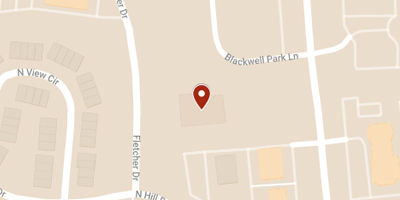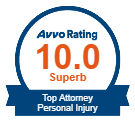.jpeg) Broken bones are common work-related injuries sustained by employees in certain industries in Virginia. If you fracture a bone on the job, you’re typically entitled to workers’ compensation benefits for your medical bills and lost wages, but your employer’s insurance company might dispute your claim, especially if it’s an expensive one. An experienced workers’ comp attorney can guide you through the claims process, stand up to a tight-fisted insurer, and help you appeal a denied claim before the Virginia Workers’ Compensation Commission (VWC) or in civil court.
Broken bones are common work-related injuries sustained by employees in certain industries in Virginia. If you fracture a bone on the job, you’re typically entitled to workers’ compensation benefits for your medical bills and lost wages, but your employer’s insurance company might dispute your claim, especially if it’s an expensive one. An experienced workers’ comp attorney can guide you through the claims process, stand up to a tight-fisted insurer, and help you appeal a denied claim before the Virginia Workers’ Compensation Commission (VWC) or in civil court.
Types of Bone Fractures and Injuries
Your bones are the anchors of your musculoskeletal system—which includes your tendons, ligaments, joints, muscles, cartilage, and soft tissue that connects the parts of the system—enabling you to perform physical tasks from walking to lifting heavy objects. Your bones also shield your internal organs from trauma and give your body its shape and structure. Every bone is covered by a protective membrane called the periosteum. When you injure a bone, the nerves in the periosteum cause pain, which can be extreme.
Bones commonly fractured in work-related injuries include arms, legs, wrists, ankles, hands, fingers, toes, jaws, ribs, vertebrae, hips, pelvis, clavicle (collar bone), sternum, and skull. Severe bone injuries can require surgery and physical therapy, as well as significant time off work for the bone to heal so that you can return to your job. A bone injury could leave you partially disabled and incapable of performing your previous duties. If this happens, you’re entitled to a light-duty job that accommodates your restrictions, as well as benefits to make up two-thirds of any wage reduction that results.
Common Bone Fractures
Terminology that might be applied to your work-related broken bone includes the following:
- Simple transverse. This is a clean break of the bone, with no splintering or crushing.
- Simple closed. The bone is broken internally and does not penetrate the skin.
- Compound open. The broken edge of the bone punctures internal tissues and tears through the skin from the inside, leaving an open wound with the bone exposed. Open fractures should be cleaned and treated as soon as possible due to the risk of infection from debris or bacteria.
- Avulsion. Tendons or ligaments are detached from broken bones.
- Angulated. The trauma that causes the fracture also bends the broken ends of the bone, generally requiring surgery to reset them properly.
- Comminuted. Violent impact breaks or crushes a bone into fragments.
- Non-displaced. The bone is cracked but remains aligned so that healing is faster than in a displaced fracture.
- Displaced. The broken ends of the bone are knocked out of alignment, making it more difficult to reset the bone. Surgery may be required.
- Hairline (occult). The crack in the bone is so small that it’s barely visible, even in an X-ray.
- Segmental. A bone is completely broken in two places. The segment of the bone between the two breaks is left unattached to either end.
- Compression. The bone collapses due to trauma or weakening of the bone tissue. Compression fractures are most common in the lumbar (lower) spine.
- Joint. When the bones of a joint are fractured, you lose mobility and range of motion. Your chances of developing arthritis increase, as well.
- Growth plate. When a child sustains a fracture, the broken bone might not continue to grow normally.
- Torsion. Trauma twists a bone until it breaks. Defective equipment in a manufacturing environment can trap an arm or hand and cause a torsion fracture.
- Spiral. A spiral-shaped crack surrounds the bone.
- Oblique. The break in the bone is a diagonal one.
- Greenstick (buckle). The bone is bent but not actually broken.
- Impacted. External trauma causes two or more bones to be jammed together and break internally.
Every type of bone injury is compensable as long as you can prove it occurred while you were performing your job duties. Because workers’ comp provides no-fault coverage, you don’t have to prove that anyone’s negligence caused your accidental injury. Bone fractures that might not be covered by workers’ comp include the following.
Pathologic Fractures
These breaks are caused by underlying medical problems such as cancer or certain types of infection. If you have such a condition but sustain a fracture that’s unrelated to your illness, the insurer will try to blame your preexisting condition for the injury. In such a case, you need a workers’ comp lawyer to help you prove your claim.
Stress Fractures
Repeating the same activities every day can cause a stress fracture over time. Because Virginia workers’ comp does not cover repetitive motion injuries, a stress fracture claim is a difficult one to prove. The insurer will probably dispute it. An attorney may be able to help you pinpoint a work accident that caused your first stress fracture symptoms to arise.
Bone Fracture Symptoms
The symptoms of a bone fracture include tingling, numbness, pain, swelling, and bruising, as well as deformity of the affected body part. An X-ray can pinpoint the bone(s) that are broken and show how serious the fracture is. Other diagnostic tests, such as a CT scan or Magnetic Resonance Imaging (MRI), can help your doctor determine what treatment is necessary to reset the bone so that it can heal.
Treatment of Broken Bones
The specific type and severity of your bone fracture will determine what treatment your doctor recommends:
Immobilization
A splint, cast, or orthopedic boot keeps your bone aligned, allowing it to heal over time. A more serious break might require traction, which utilizes a system of weights and pulleys to hold the bone in the right position for proper healing.
Surgery
External fixation surgery utilizes metal pins that are placed in the bone and fastened to an external bar that stabilizes the bone while it heals. For a segmental or comminuted fracture, internal fixation surgery reconstructs the broken bone with screws and rods that remain there permanently.
Recovering From a Bone Fracture
It could take weeks or even months for your fracture to heal completely. Your age and physical condition, as well as the nature of the break, will determine your actual recovery time. Once your bone is healed, you’re likely to require some physical therapy to strengthen muscles that have weakened during the recovery process.
What to Do If You Break a Bone at Work
If your injury requires emergency treatment, seek care at the nearest medical facility. As soon as possible thereafter, report your injury to your employer, who should file a First Report of Injury (FROI) with the VWC on your behalf. You may then submit a Claim for Benefits form from the “Injured Workers” page of the VWC website and seek ongoing medical care from a doctor approved by the insurance company. Follow the doctor’s orders, keep all appointments, take medication as prescribed, and retain receipts for all your treatments. Contact a workers’ comp attorney under any of the following circumstances:
- Your employer fires or penalizes you for filing a claim.
- The insurer is slow to approve necessary treatments.
- You’re dissatisfied with your doctor or your treatment plan.
- You’re not receiving weekly wage benefits on time.
- Your claim is denied.















